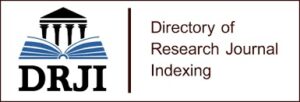BEAUTY IN INDIAN LANGUAGES
Language, culture, and education are intricately linked in the Indian context, where diverse linguistic and cultural backgrounds shape educational experiences and outcomes. This study examines how language and culture influence education in India, focusing on the interplay between linguistic diversity and cultural heritage.
Objectives The primary objectives are:
To explore the impact of linguistic diversity on educational practices in India.
To understand the role of cultural heritage in shaping educational content and pedagogy.
To identify challenges and opportunities in integrating language and culture in education.
Method A qualitative approach is used, involving content analysis of educational policies, textbooks, and curricula. In-depth analysis of documents is conducted to gather insights on the influence of language and culture in education.
Findings The study finds that:
Linguistic diversity enriches educational content but poses challenges in standardization.
Cultural heritage plays a crucial role in shaping educational practices and student engagement.
Integration of local languages and cultural contexts enhances learning outcomes and fosters cultural pride.
Discussion The findings suggest that while linguistic diversity presents challenges, it also offers opportunities for a richer educational experience. Emphasizing cultural heritage in education fosters a sense of identity and belonging among students. However, balancing standardization with cultural relevance remains a key challenge.
Conclusion Integrating language and culture in education is vital for creating inclusive and effective educational environments in India. Policymakers and educators must work together to address the challenges and leverage the opportunities presented by India’s linguistic and cultural diversity.
Keywords: Language, Culture, Education, India, Linguistic Diversity, Cultural Heritage, Educational Practices




















